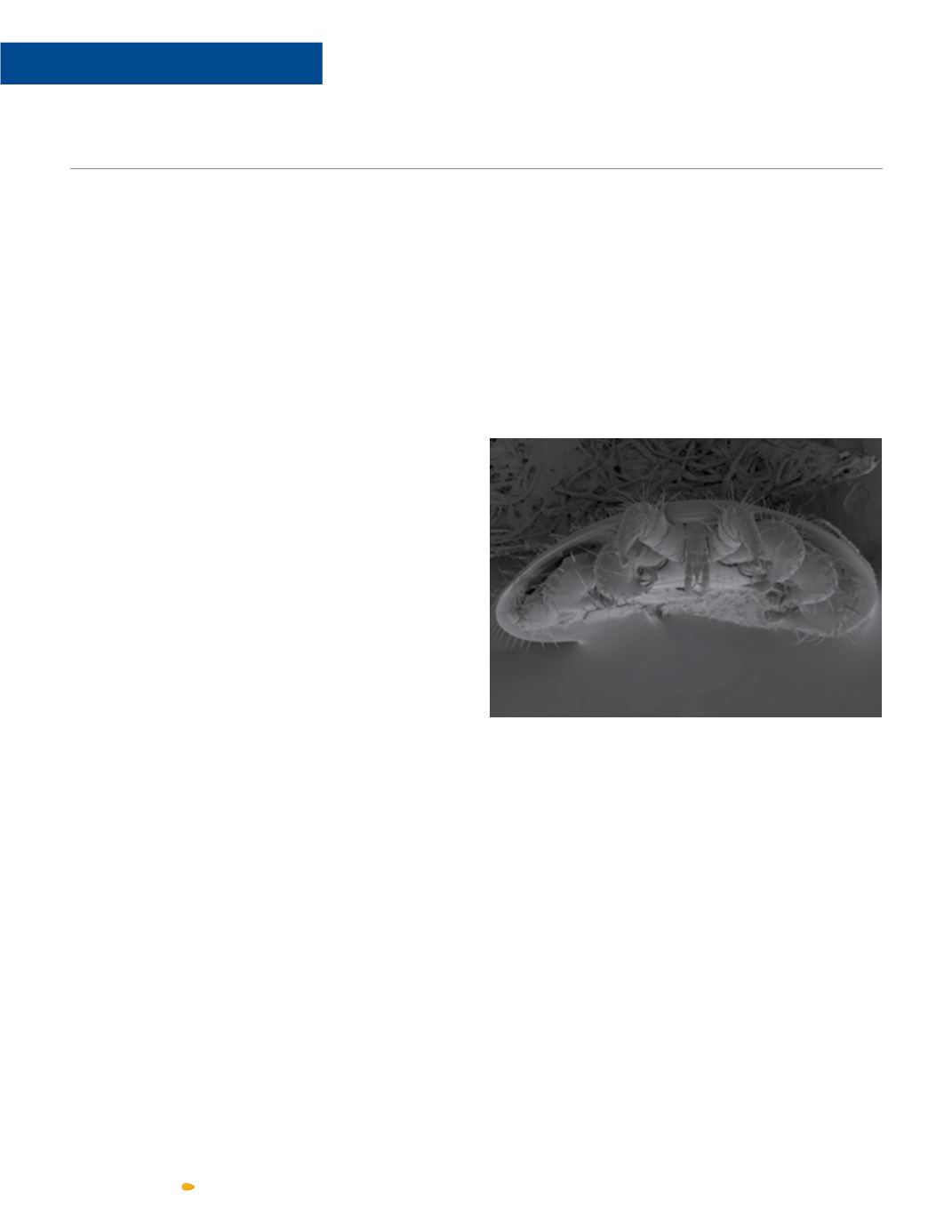
THE BEE BOX
First Annual Mite-A-Thon
Varroa mites (Varroa destructor) are arguably the most
heinous scourge of honey bees. They are ubiquitous, can
easily migrate from colony to colony and vector viruses
that lead to elevated colony mortality. Yet, despite
their destructive capacity, many beekeepers still do not
monitor for these infestations nor have a Varroa mite
management in place. At the Bee Informed Partnership,
we work hard to get the word out to anyone who will
listen – Varroa mites are in every colony. Beekeepers
must accept that fact and understand that if you want
to keep your colonies alive, you must monitor frequently
and be proactive in your management.
Varroa mites are not native to the European (or
Western) honey bee (Apis mellifera) and were
accidentally introduced to the U.S. in the late 1980s.
Their natural host is Apis cerana (Eastern honey bee
from Asia); however, Varroa mites can and do thrive in
our honey bee colonies. They are a large parasite that
can be visibly seen with the eye on adult honey bees
and in the brood. Varroa mites can directly (feeding on
brood) and indirectly (vectoring viruses) harm and kill
colonies if left untreated. Since these mites breed in the
honey bee brood, their population closely follows the
population dynamics of the colony itself, lagging just a
bit behind. Honey bee colonies peak in the late spring/
early summer to time placing large number of foragers
on pollen/nectar producing plants at their peak. As
you would guess then, Varroa mites are peaking in the
early fall. Fall is perhaps the most important season in
the beekeeping calendar. This is the time of year when
colony reproduction slows, forage becomes scarce yet
Varroa mites are at their peak population in untreated
colonies. If a colony is to survive the winter, adequate
stores or feeding must take place and Varroa mites
must be reduced to a level that will not harm the winter
bees being produced by the colony at this time. What
level does that mean
?
For those states who experience
a true winter, we suggest that Varroa mites be reduced
to <2–3 percent during the fall months. Left untreated,
Varroa mites will kill your colony. If a few colonies are
above threshold during this time, treat the entire yard.
Crashing colonies due to high mite loads will affect the
other colonies in the yard and other yards nearby that
are managed by other beekeepers.
How do you monitor
?
When do you monitor
?
For
those who have never done so and for those who
regularly do, there was a national citizen science event
that occurred for the first time this year. The first ever
National Mite-A-Thon was held September 9 through
16, where participants monitored the level of mites
(number of mites per 100 bees) using a standardized
protocol utilizing two common methods of assessment
(powdered sugar roll or alcohol wash) and then
enter data, including location, total number of hives,
number of hives tested, local habitat and the number
of Varroa mites counted from each hive. Please note:
The published information does not identify individual
participants.
IN YOURORCHARD
80x magnification of Varroa mite gnathosoma (mouth).
Photo courtesy of Samuel Ramsey (University of Maryland),
Ron Ochoa (USDA-ARS), Gary Buchanan (USDA-ARS)
3 6
A L M O N D F A C T S


